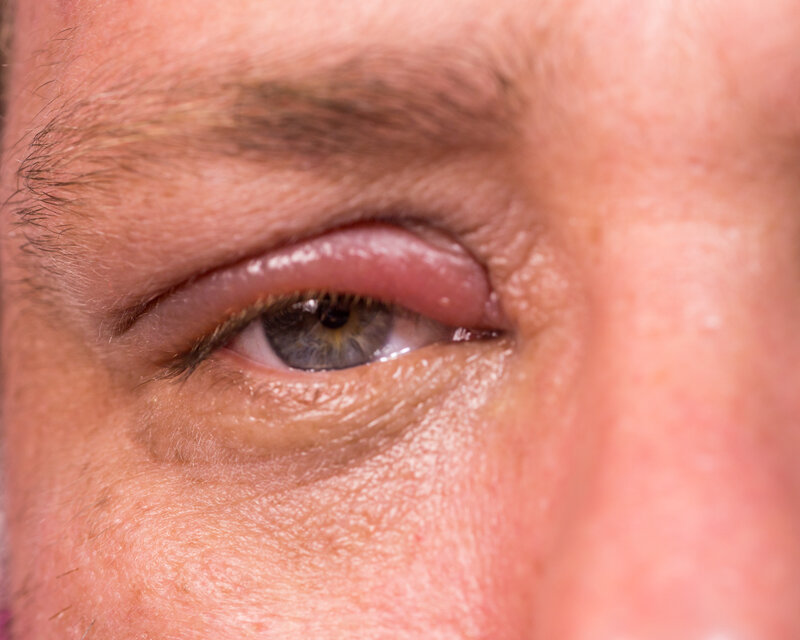Bacterial Eye Infections: DIY Treatment Or Eye Doctor?

Did you or a family member wake up with red or goopy eyes this morning? Have itchy or stinging eyes that are getting worse instead of better, even with the use of OTC eye drops? It sounds like you might have a bacterial eye infection (bacterial conjunctivitis).
Symptoms And Treatment Options For Bacterial Eye Infections
There are a few different types of eye infections, which is why treatment isn’t a one-size-fits-all solution. Infections can be caused by bacteria, viruses, or fungus that invade the eye through direct contact. For example, the invader may enter through poorly cleaned contact lenses or by rubbing your eyes with unwashed hands. They can also enter your eyes via the environment (a pool, lake, blown in on the wind, etc.)
People often mistake the first signs of an infection, such as redness, itchiness, or water/goop, as seasonal allergies. Unfortunately, it’s only once the infection sets in that patients realize it’s something more. Taking action right when you notice the following symptoms is often the best way to stop a bacterial infection in its tracks.
Symptoms of an eye infection
The most common signs of an infection include:
- Red eyes. The red (or very pink) eyes are unmistakable because the red takes over the white. In addition, infections often start in one eye and then spread to the other. So, infection-related redness in one eye is a “red flag” since seasonal allergies typically show up in both eyes simultaneously. This is another reason that we refer to bacterial conjunctivitis as “pink eye.”
- Grittiness or mild discomfort. The external eye tissues are inflamed and irritated, so this feels like an agitating grittiness or like “something is in the eye.”
- Itchy eyes. Another reason patients often mistake a bacterial infection with allergies is that their eyes itch. However, the agitated eyes may feel itchy as a result of infection.
- Swollen eyelids. The tissue around the eyes may also become redder than usual or swollen due to heightened inflammation (or because you’re rubbing your eyes more often).
- Watery or goopy discharge. Infected eyes often water more than usual. Once it sets in, they produce a mucousy discharge that becomes yellowish-to-green in color. You may wake up with your eyes glued shut from the goop, which requires a warm, wet washcloth to soften the hardened discharge so you can separate the eyelashes/lids from one another.
Believe it or not, most eye infections actually clear up on their own within a week or two, with proper care and attention. The problem with the “watch-tend-and-wait” method is that bacterial conjunctivitis is highly contagious. As a result, most schools and workplaces send students/employees home until the eyes are clear - and with good reason.
DIY Tend and Wait Treatment for Eye Infections
The most common ways to treat eye infections at home include:
Eating nourishing foods and resting often
As with any infection, your immune system is hard at work fighting it off. Support healthy immune system function by eating nourishing foods and getting lots of rest.
Bathing eyes frequently throughout the day
Flushing and washing eyes out multiple times a day helps to rid the eyes of bacteria, leaving less behind for the body to fight off. Use a clean, soft cloth or soft, sterile pads to clean the eyes with warm water. Never reuse these. Cloths should be laundered (preferably on a “sanitize cycle” if you have it) before re-using, while pads should be thrown away.
Try using a gentle saline solution to flush eyes
You can use saline solution (salt water) from your local pharmacy to flush your eyes. Salt is a natural enemy of many common bacteria, and it’s also soothing on mucous membranes. You can also make your own saline eyewash by doing the following:
- Thoroughly wash/rinse/dry the container you’ll store the saline solution in, including the lid. Quart jars work well for this.
- Boil 2 cups of tap water for 10 minutes
- Add 1 tsp of non-iodized salt (kosher, Himalayan, or sea salt)
- Stir until dissolved and then add to a jar
- Let liquid get to room temperature before using
You can store your homemade eyewash in the fridge for up to 24 hours, after which it’s best to make a new batch. Medine droppers work well for dropping multiple drops into the eye. Use a warm, clean cloth/pad to catch runoff.
An alternative method is to purchase a gallon of distilled water and add 8 tsp of non-iodized salt. Cover with the lid and shake gently until the salt completely dissolves. You can store the gallon container of eyewash for up to one month.
Thoroughly wash your hands
Wash your hands with soap and water regularly, especially after treating or rubbing your eyes. We also recommend using a fresh towel after each shower and changing your pillowcase each day to prevent the infection from spreading into the eye and prevent re-infection.
If you do these DIY treatments for bacterial eye infections regularly, you should see an improvement in about a week to two weeks. However, if you don’t have time for that, or the infection becomes worse despite your best efforts, OR the infection spreads to other members of your family, contact your optometrist.
Contact Your Optometrist or Physician
Once we’ve established whether or not the eye infection is bacterial, viral, or fungal, we can prescribe medicated eye drops or ointment. Usually, these are put into the eye about three times per day. The good news is that unlike the DIY treatment approach, which takes up to two weeks to fully clear up, prescription drops take effect quickly.
Most people notice a dramatic improvement, especially with any eye discomfort, within a matter of 24 hours or less. In addition, the infection may appear wholly cleared up within three days - although you should always continue to apply the drops for the duration of the instructions on the prescription label.
Are you worried that a bacterial eye infection has gotten the best of you or a family member? Schedule an appointment with Eye to Eye Family Vision Care, and we’ll get you sorted out ASAP.

